Solar Radio Burst Image Collection
This is a private collection of the solar radio burst dynamic spectra
from various sources (papers and observatory web sites).
0. Schematic diagram of solar radio burst classification
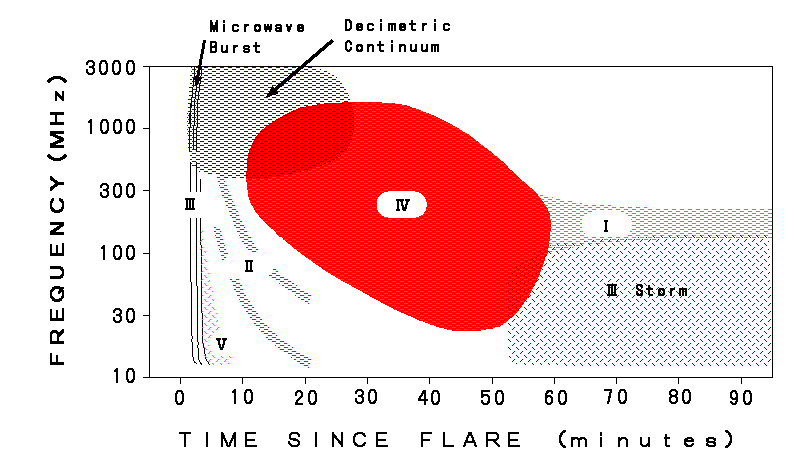
- from Hiraiso/NICT website
(http://sunbase.nict.go.jp/solar/denpa/index-J.html)
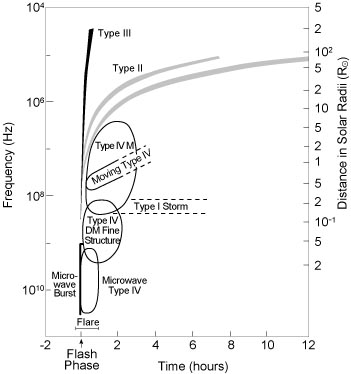
- from Tufts Univ. website (by Kenneth R. Lang)
(https://ase.tufts.edu/cosmos/view_picture.asp?id=176)
1. Type-I
A non-flare-related phenomenon, consisting of a continuum component and
a burst component.
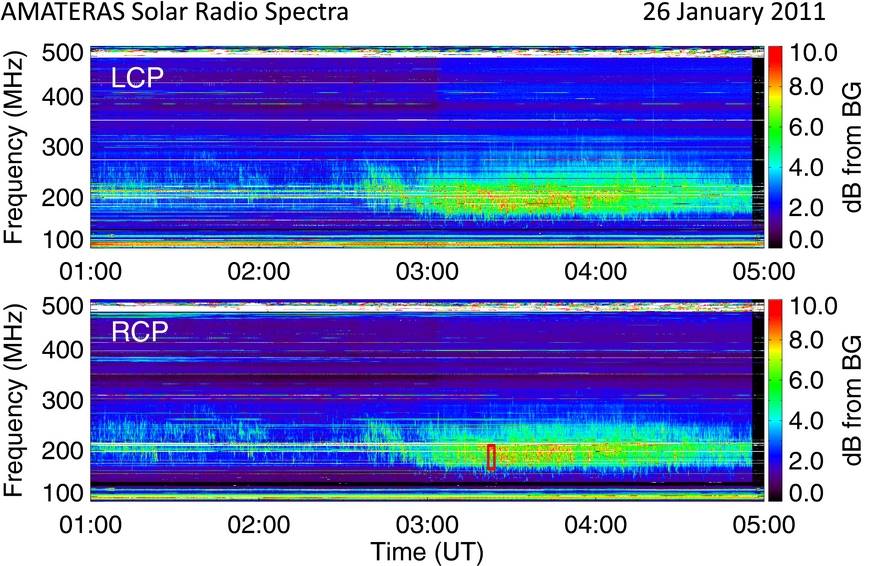
- AMATERAS/Tohoku Univ., Japan
- Iwai, et al.(2013) ApJL, vol 768, L2(4pp).
- Type I storm consists of numerous micro bursts, whose occurrence
frequency distribution follows a power law. The spectral index is
between 4.0 and 5.0, which is higher than that of flare events(<3.0).
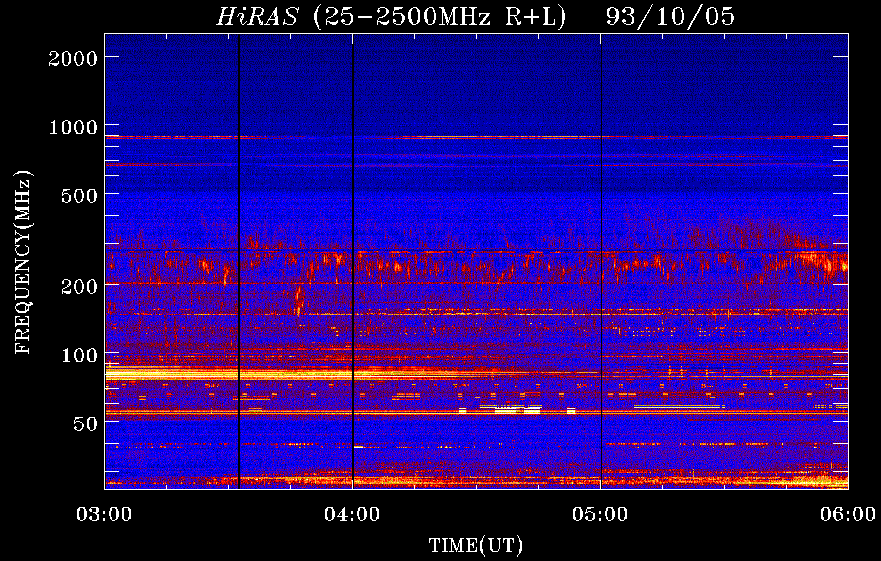
- Hiraiso Radio Spectrograph (HiRAS)/NICT, Japan
2. Type-II
Typically occur at around the time of the soft X-ray peak in a solar flare.
Identified by a slow drift to lower frequencies with time in dynamic
spectra, the frequent presence of both fundamental and second-harmonic
bands (with a frequency ratio of 2), and splitting of each of these bands
into two traces.
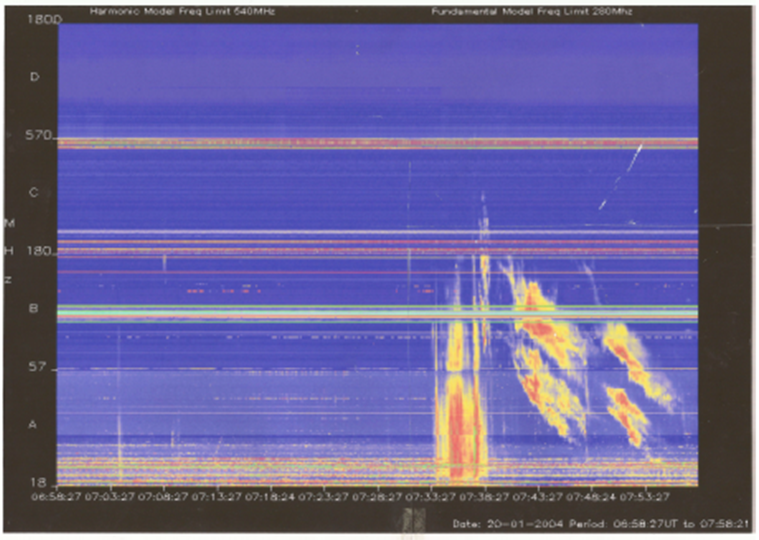
- Culgoora radio spectrograph, Australia
- Vijaykumar H. Doddamani, et al.(2014) J.astronomy, vol 3, p.22-29.
- Showing two type II bursts (starting at 07:40 UT and at 07:50 UT)
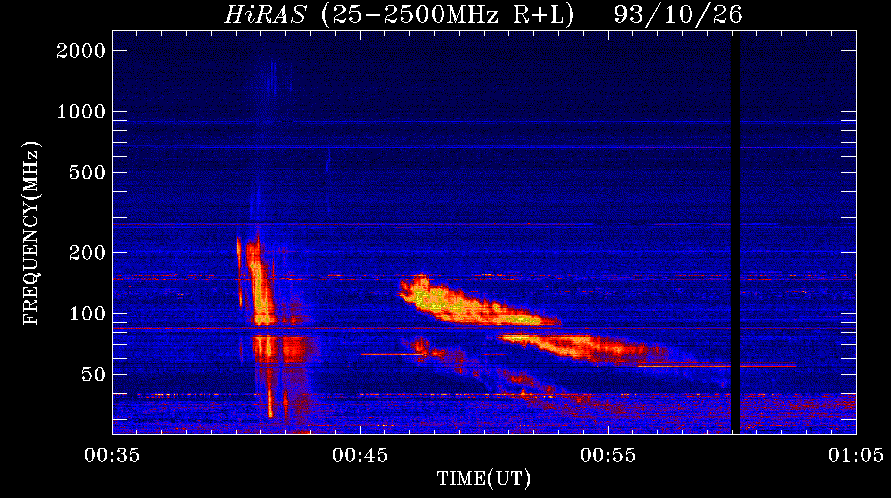
- Hiraiso Radio Spectrograph (HiRAS)/NICT, Japan
- Type III burst (00:40 UT) followed by Type II (00:47 -- 00:57 UT)
3. Type-III
Brief radio bursts that drift very rapidly in frequency versus time.
Commonly seen in the impulsive phase of solar flares, but can be seen
at times when there is no activity at other wavelengths.

- Solar Radio Spectrograph, SN4000 Sumedang, Indonesia
- from presentation file by Johan Muhamad
(National Institute of Aeronautics and Space).
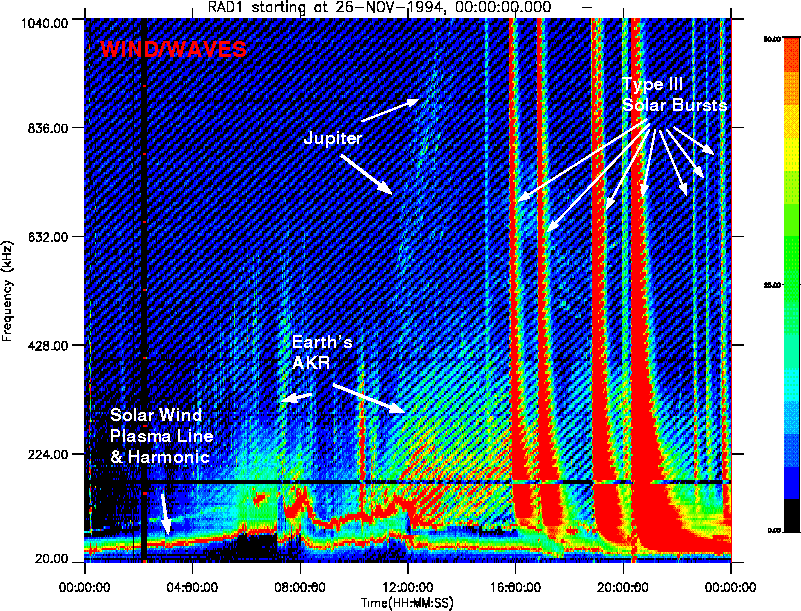
- Waves onboard WIND spacecraft, NASA
(http://solar-radio.gsfc.nasa.gov/wind/examples.htm)
4. Type-IV
Broadband quasi-continuum features associated with the decay phase of
solar flares (attributed to electrons trapped in the post-flare arcades,
etc.)
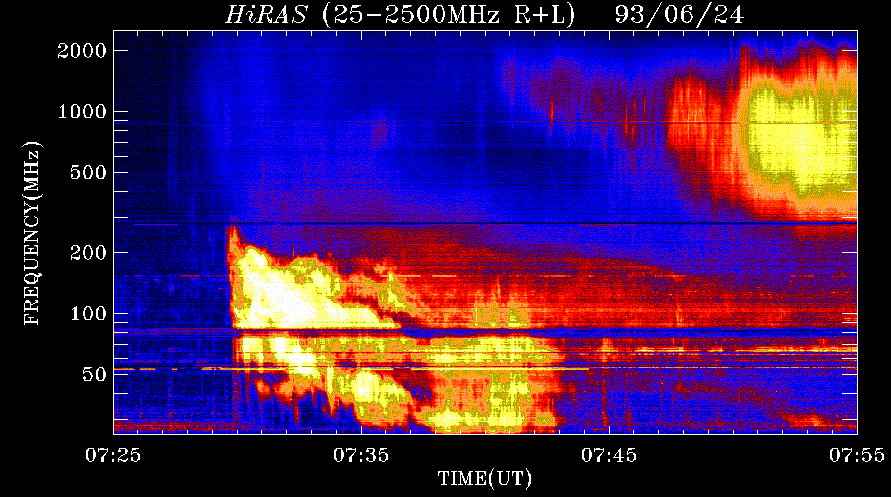
- Hiraiso Radio Spectrograph (HiRAS)/NICT, Japan
- Type II burst (07:30 UT) followed by Type IV
(07:42 UT - at above 300 MHz)
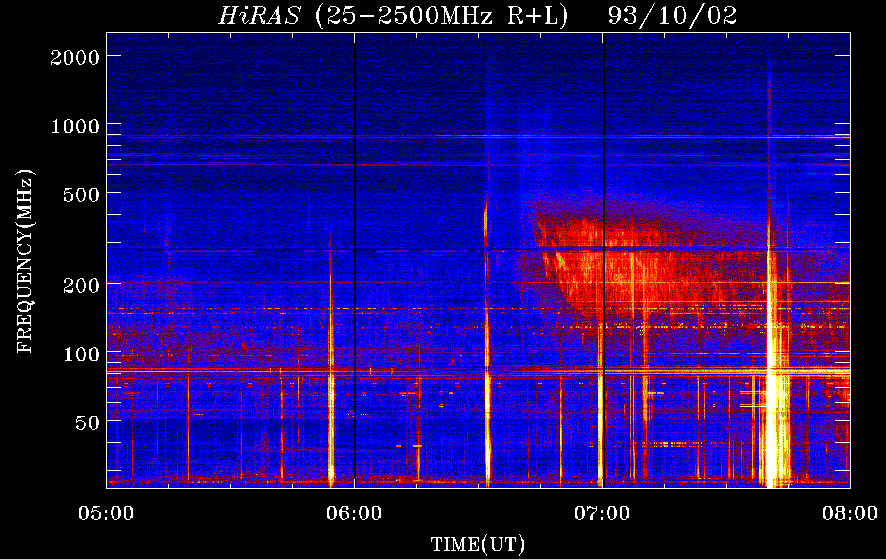
- Hiraiso Radio Spectrograph (HiRAS)/NICT, Japan
- Type IV burst starts around 06:45 UT (at above 100 MHz).
Several Type III bursts observed together.
5. Type-V
Typically appear as the extended phase of a Type III burst.
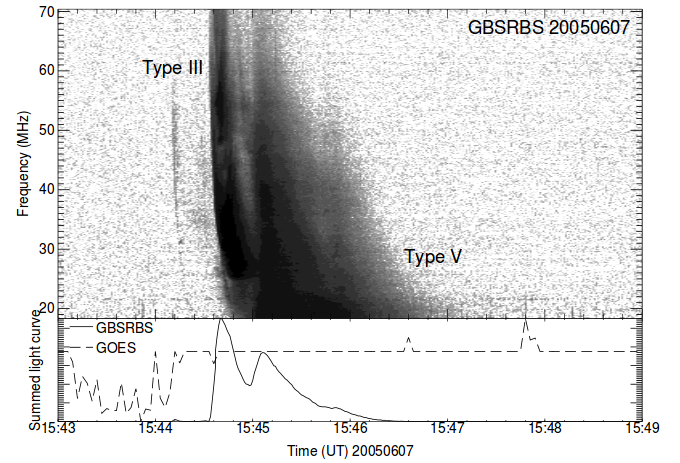
- Green Bank Solar Radio Burst Spectrometer(SRBS), West Virginia
- from " Solar Radio Bursts and Space Weather",
by S. M. White, Asian Journal of Physics, 16, 189, 2007
- Type III starts at 15:44:30 UT, followed by the Type V
starts 15:45:00 to 15:46:30 at 20 MHz.






